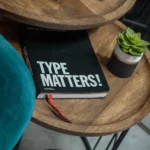Among the many elements critical to the success of a website, the design is one of the most important. A well-designed website attracts more visitors and provides a user-friendly experience that keeps visitors engaged and returning for more.
Whether you’re building a website for a small business or a larger enterprise, there are essential web design elements you should always include to create a user-friendly website that meets the needs of your target audience.
Let’s take a look at some of these essential web design elements.
Navigation
Well-designed navigation is crucial for websites, allowing visitors to quickly and intuitively access the content they need. Navigation should be clear, concise, and organised, allowing visitors to find the information they are looking for quickly. Poorly designed navigation can frustrate visitors and may result in them leaving the website altogether. Effective navigation should be prominently displayed, and use descriptive labels to guide visitors to the relevant sections of the website.
Furthermore, good navigation design can improve the website’s search engine optimisation (SEO) by making it easier for search engines to crawl and index its content. Well-designed navigation ensures visitors can quickly and easily find the information they need, improving the overall user experience and potentially increasing the website’s traffic.
Responsiveness
Responsive design is an integral aspect of modern websites, as it ensures that websites display optimally across different devices, including desktops, laptops, tablets, and mobile phones. With the increasing number of people accessing the internet via mobile devices, having a website that is not mobile-friendly can result in a poor user experience and deter potential visitors from returning.
Responsive design allows website content to adapt to different screen sizes and resolutions, making it easier for visitors to navigate and access information. Additionally, Google prioritises mobile-friendly websites in its search results, so having a responsive design can improve a website’s visibility and attract more visitors. Responsive design ensures that websites are accessible and user-friendly across different devices, improving the overall user experience and increasing a website’s reach.
Graphics and photography
Effective use of graphics and photography creates a visual impact, communicates the website’s message and brand identity, and enhances the user experience. Choosing high-quality images relevant to the website’s content and purpose is essential, ensuring they’re visually appealing and engaging.
Incorporating graphics and images can also help break up the text, making the design more dynamic and exciting. However, using these elements judiciously is essential, as an excessive amount can be overwhelming and detract from the website’s content. In summary, graphics and photography are crucial design elements that can significantly improve a website’s aesthetic appeal and user experience.
Content
Well-written content helps to attract and retain visitors, establish a website’s authority and credibility, and improve the overall user experience. High-quality content makes a website more engaging and user-friendly. Search engines like Google prioritise websites with good content in their search results, making it easier for potential visitors to find the website.
When content is informative, insightful, and well-researched, visitors are more likely to view the website and the business or organisation behind it as a trustworthy and reliable source of information. In today’s internet, where online scams and fake news are prevalent, credibility and trust are crucial for building a solid online presence. Therefore, investing in well-written content that accurately represents the business or organisation’s values, goals, and message is essential.
Colour scheme
Colour schemes play a vital role in websites as they can influence a visitor’s perception of the website and its brand. Colours can evoke emotions, communicate messages and set the tone for the website’s content. Effective use of colour can help to establish a website’s identity and create a strong brand image.
It’s crucial to choose a colour scheme consistent with the website’s purpose and message and to ensure that the colours are visually appealing and easy on the eyes. Colours should be used consistently throughout the website, from the logo and branding to the text and background. In summary, colour schemes are essential for establishing a website’s identity, creating a solid brand image, and evoking visitors’ emotions.
Typography
Effective typography can enhance the website’s readability, hierarchy, and aesthetic appeal. Typography should be consistent with the website’s purpose and message and chosen carefully to match the brand’s identity.
Using different fonts, sizes, and styles can help establish a hierarchy of information and guide visitors to the most critical content. Furthermore, typography can also influence the website’s accessibility and user-friendliness, as poorly chosen fonts can be challenging to read and may deter visitors. Get the typography right, and you’ll have a visually appealing, user-friendly website that effectively communicates your website’s purpose and message.
So to wrap up, these are just some of the essential web design elements you should include in your website to create a user-friendly and engaging experience for your visitors.
At Zookri, we understand the importance of good web design, and we’re dedicated to helping small businesses create websites that meet their specific needs and goals. If you’re looking for a boutique web design agency that offers tailored services aimed at SMBs, get in touch with us today to find out how we can help you create a user-friendly and successful website.



